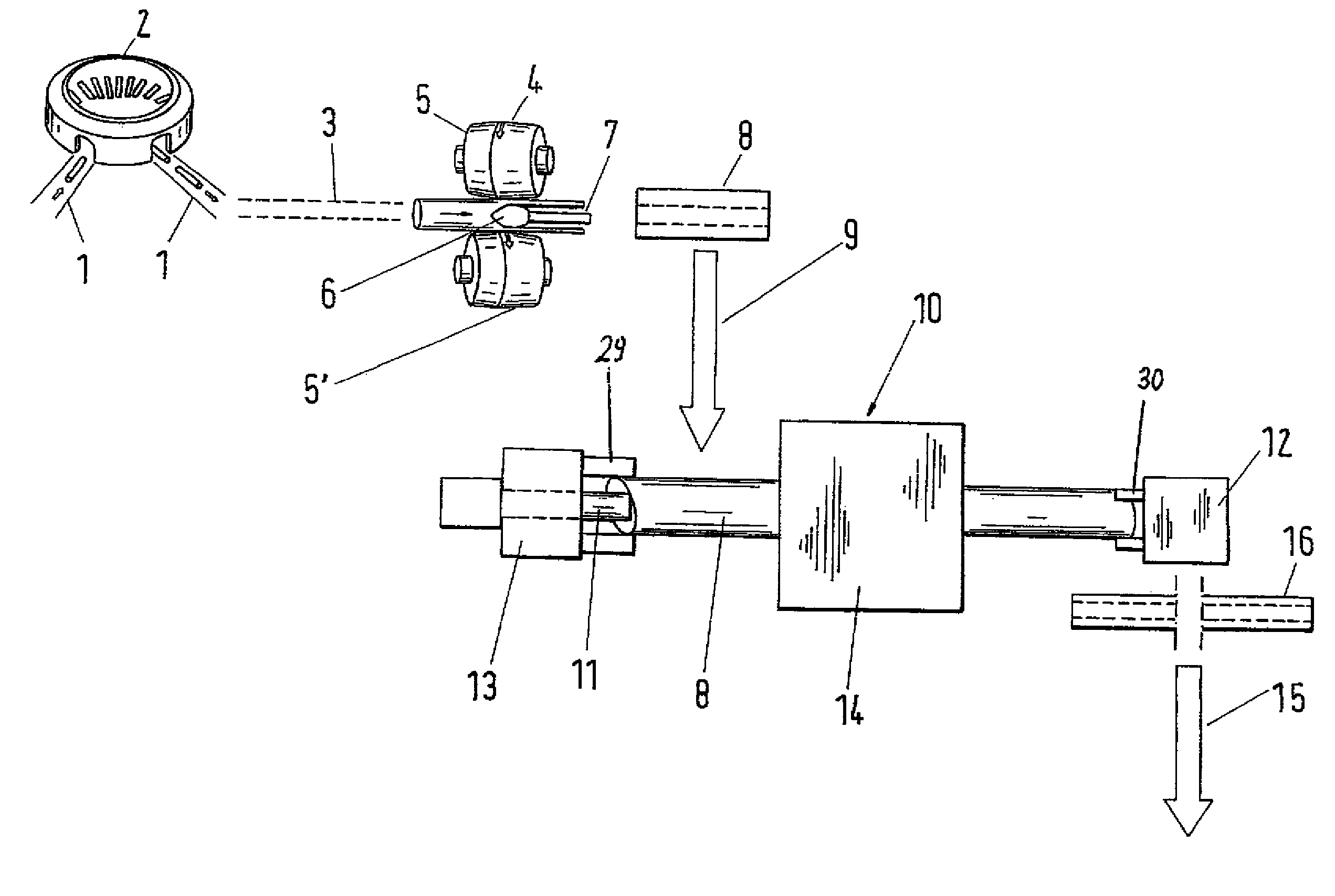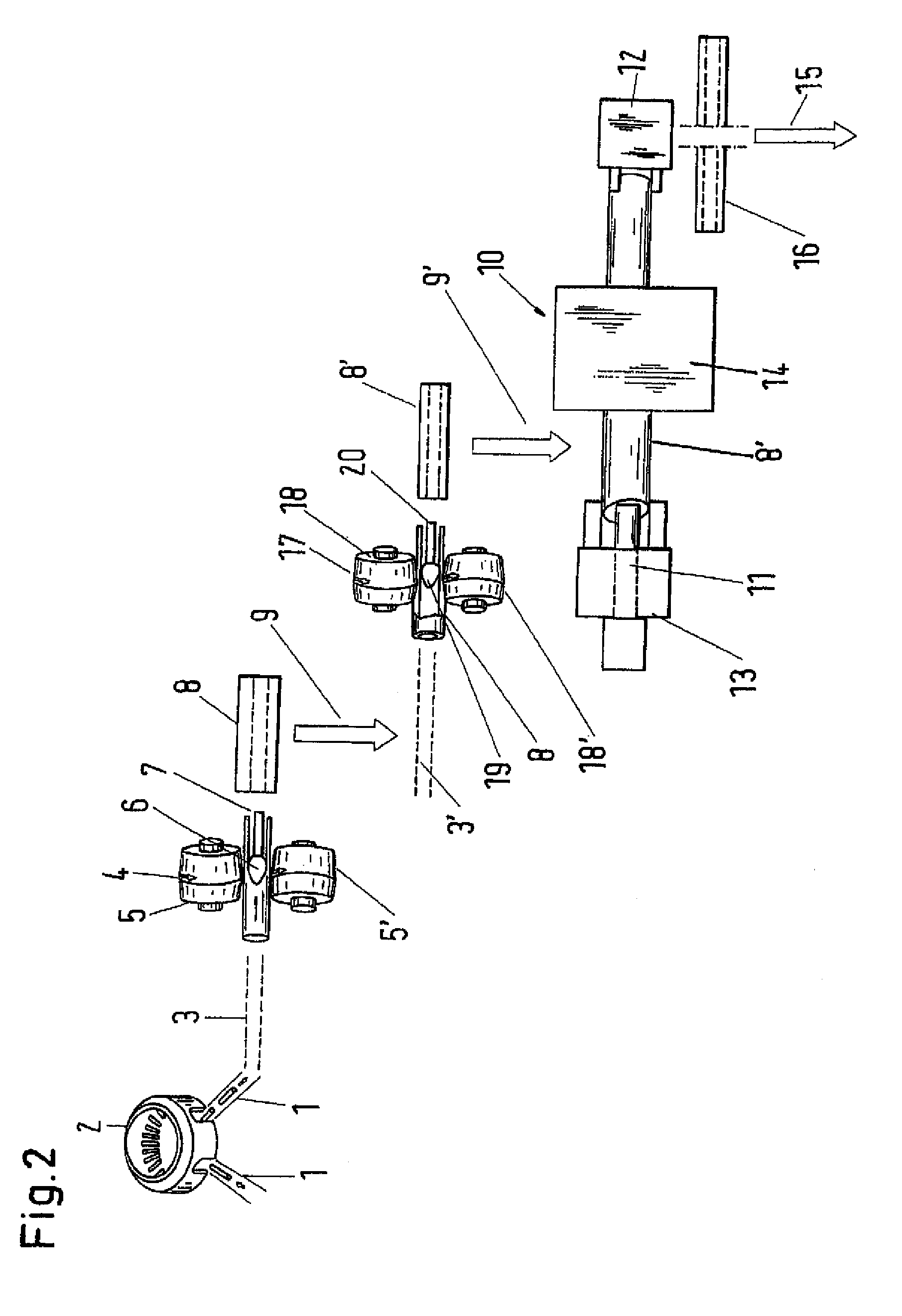Method of making a seamless hot-finished steel pipe, and device for carrying out the method
a technology of hot-finished steel pipe and seamless technology, which is applied in the direction of heat treatment equipment, manufacturing tools, furnaces, etc., can solve the problems of less suitable continuous rolling process and piercing mill process, more or less long modification time during a change in size, and less suitable production cycle. , to achieve the effect of reducing the number of retrofitting times, reducing the cost of production and improving the quality
- Summary
- Abstract
- Description
- Claims
- Application Information
AI Technical Summary
Benefits of technology
Problems solved by technology
Method used
Image
Examples
Embodiment Construction
[0029]FIG. 1 shows a schematic illustration of the method according to the invention with only one piercing unit as first shaping step. By way of example, a billet 1, sized to length from a cast steel bar is placed in a rotary hearth furnace 2 and heated to a shaping temperature of, e.g., 1250° C. After heating and exiting the rotary hearth furnace 2, the heated billet is fed via a roller table 3 to a piercing unit.
[0030]In this exemplified embodiment, the piercing unit is designed as skew rolling mill 4 with two skew rolls 5, 5′, and includes an internal tool, comprised of a piercing mandrel 6 and a holding rod 7. As piercing by means of skew rolls is generally known, a more detailed discussion is omitted. Following the piercing step and possible removal of a bottom of the billet 1, the hollow ingot 8 may be descaled on the inside and outside.
[0031]Piercing the billet 1 produces a hollow ingot 8 which is fed via a transverse transport 9 to the forging machine 10. The subsequent str...
PUM
| Property | Measurement | Unit |
|---|---|---|
| thickness | aaaaa | aaaaa |
| wall thickness | aaaaa | aaaaa |
| thickness | aaaaa | aaaaa |
Abstract
Description
Claims
Application Information
 Login to view more
Login to view more - R&D Engineer
- R&D Manager
- IP Professional
- Industry Leading Data Capabilities
- Powerful AI technology
- Patent DNA Extraction
Browse by: Latest US Patents, China's latest patents, Technical Efficacy Thesaurus, Application Domain, Technology Topic.
© 2024 PatSnap. All rights reserved.Legal|Privacy policy|Modern Slavery Act Transparency Statement|Sitemap



